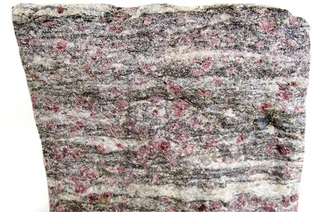 loading
loading
FindingsJourney from the depthsYale geologists identify rocks that made their way to the earth's surface from 100 miles below.  View full imageIn the hills of northern Connecticut, there’s a gray rock outcrop with a deep history: it was once buried a hundred miles below Earth’s surface. The ancient rock was created as the Appalachian Mountains were forming, and it is the only part of Earth’s crust in the United States, Canada, or Mexico that is known to have traveled so far to reach the surface. It offers a glimpse of what happens deep below mountains that are in the process of forming. “It’s so unusual to have rocks that return from that depth,” says Duncan Keller ’21PhD, explaining that for crustal rocks, returning from 30 miles deep is noteworthy. “The vertical height that these rocks traveled was about 23 times the height from sea level to the top of Mount Everest.” It was Keller, with geology professor Jay Ague, who proved how far the rocks had risen. About 400 million years ago, a portion of seabed was pushed deep under what is now the eastern North American continent. After its dive into the Earth’s mantle—where slowly rolling convection currents power tectonic plate movements, earthquakes, and the birth of mountains—the rock made its way back to the exterior, possibly by floating up through denser rock. (Keller and Ague’s paper appeared in Science Advances.) To decipher this story, Keller and Ague examined garnet, a hard, red mineral commonly found in metamorphic rocks. By thinly slicing garnets found in the Connecticut outcrop, they discovered microscopic needles and plates. These are made of other materials, including quartz and rutile. Such minerals, Keller and Ague showed, had in turn formed from the residue of a rare kind of garnet—one that can exist only under the extreme pressure present at 100 miles below the surface of the Earth. Garnets are well suited for preserving such information about depth and temperature. They are “snapshots of what’s going on in the rock at every little interval of growth,” Keller says. They’re “like tree rings.”
The comment period has expired.
|
|